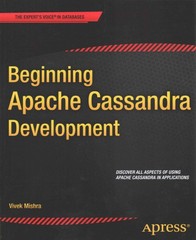Answered step by step
Verified Expert Solution
Question
1 Approved Answer
Custom Routing: Implementing custom routing protocols in NS - 3 requires modifying existing protocols or creating new ones from scratch. This involves modifying routing messages,
Custom Routing:
Implementing custom routing protocols in NS requires modifying existing protocols or creating new ones from scratch. This involves modifying routing messages, decisionmaking algorithms, and table updates Could you writ ethe code of it dont understands
Steps:
Identify your specific simulation goals and requirements. What are you trying to compare or analyze?analyze packet delivery ratio, end to end delay, routing overhead,throughput. Could you write the code of it
Choose appropriate mobility models for different types of vehicles.
Decide on the level of customization for AODV and OLSR routing. Do you need minor adjustments or completely new protocols? need hybrid vanet routing protocols for AODV andf OLSR
Start with existing code examples and tutorials, then modify them based on your needs.
Test and validate your simulation setup and custom code.
Remember, developing a complex simulation like this requires a good understanding of NS network protocols, and VANETs. If you find the task challenging, consider seeking help from the NS community or collaborating with someone experienced in network simulation. Custom AODV RouteRequest:
AODV Route Request, Reply, Error:
AODVRouteRequest:
Create a RouteRequest packet with source and destination addresses.
Broadcast the packet to neighboring nodes.
AODVRouteReply:
Nodes receiving RouteRequest check their routing tables for a path to the destination.
If a path exists, send a RouteReply back to the source.
AODVRouteError:
If a node cannot find a route to the destination, send a RouteError back to the source.
Custom Routing for AODV and OLSR:
Custom AODV:
Modify the AODV routing algorithm behavior based on your specific needs, like prioritizing certain routes or incorporating additional metrics.
Override existing AODV functions like RouteRequest or RouteReply to implement your custom logic.
Custom OLSR:
Modify the OLSR multipoint relay algorithm to adapt to specific network conditions or incorporate additional information like zone boundaries.
Override existing OLSR functions like MPR selection or HELLO message generation. need you to show me in this code for better understanding it make non sense. Ptr mobility CreateObject;
mobilitySetHighwaySpeed; Set speed limit
mobilitySetLaneNumber; Set number of lanes
Ptr node CreateObject;
nodeSetMobilityModelmobility;
ZoneBased Switching:
bool isAODVZonePtr node
Check if node is within an AODV zone eg based on location
if isAODVZonenode
Use AODV routing
else
Use OLSR routing
write me the code dont undersand it truct RouteEntry
IpvAddress dest;
IpvAddress nextHop;
RoutingProtocol protocol; AODV or OLSR
other information
;
std::vector routingTable;
AODV RouteRequest:
Ptr packet Create;
packetSetSourceIpvAddresssourceAddress;
packetSetDestinationIpvAddressdestAddress;
nodeSendpacket;
Custom AODV RouteReply:
Ptr reply Create;
replySetRouteroute; Modified route based on your custom logic
nodeSendreply; complete the write whole code dont seperate it parts and parts. t makes difficult
Step by Step Solution
There are 3 Steps involved in it
Step: 1

Get Instant Access to Expert-Tailored Solutions
See step-by-step solutions with expert insights and AI powered tools for academic success
Step: 2

Step: 3

Ace Your Homework with AI
Get the answers you need in no time with our AI-driven, step-by-step assistance
Get Started


